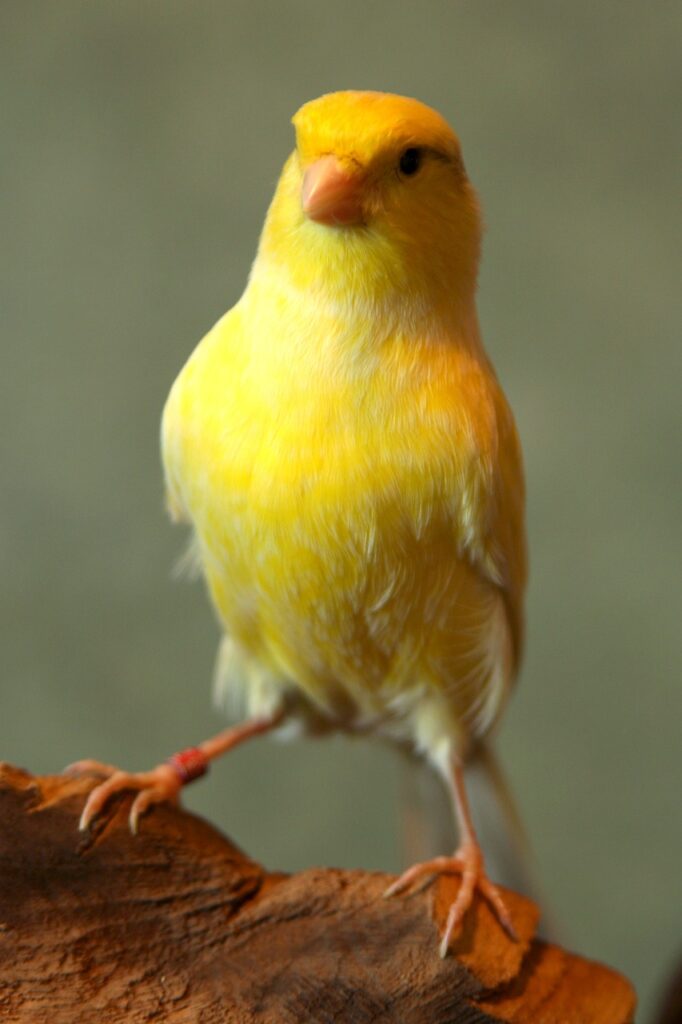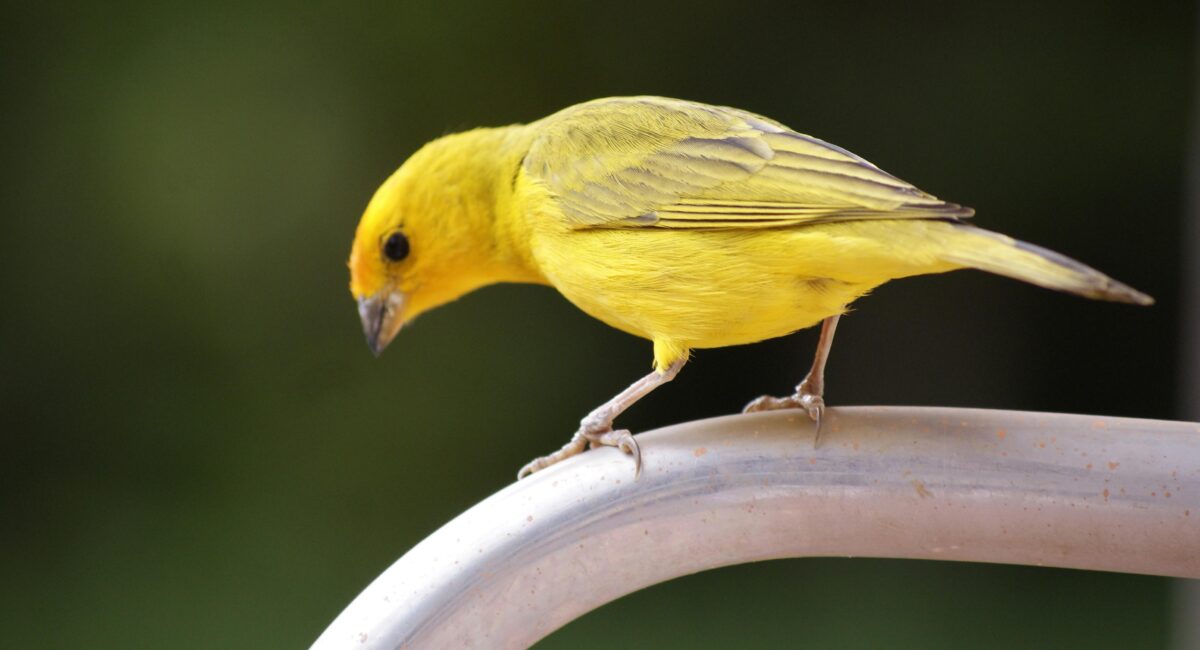A Complete Profile Of Charming Canary With Vibrant Plumage
Wouldn’t it be wonderful to wake up every morning with melodious songs? If you’re a morning person like me then canaries could be an excellent choice as a pet bird. Those small and charming birds are known for their vibrant plumage and melodious songs. In this article, I’m going to provide a complete profile of charming canaries with vibrant plumage and give you a clear view of canaries.
So let’s get started….
Physical Characteristics of Canaries
| Size | 4.7 to 5.5 inches. |
| Weight | 14 to 28 grams. |
| Body Color | Various colors including white, orange, brown, and red, depending on the breed and mutation. But they are famous for bright yellow. |
| Tail Color | Usually matches the body color but can sometimes be darker. |
| Wingspan | 7.9 to 9.1 inches. |
| Lifespans | 10 to 15 years. |
| Personality Traits | Generally calm, social, and can be quite friendly. |
| Sexual Maturity | 9 to 12 months. |
| Clutch Size | 3 to 5 eggs. |
| Breeding Seasons | Usually, they breed in the spring, between March and June. |
History of Canaries
These songbirds are native to the Canary Islands, Madeira, and the Azores. The Islands are part of Spain which is located off the northwest coast of Africa. These birds were named after the Canary Islands.
It says that the Spanish sailors first brought these little charmful birds to Spain in the late 15th century. Then monks in Spain started breeding them in the 16th century in captivity. Later, the breeding spread among the German Roller, the Belgian Waterslager, and the Spanish Timbrado. These canaries were much different from the canaries we see nowadays. Over time, selective breeding transformed them into multiple color variations and song types.
Behavior & Personality
The behavior of canaries is charming and unique, which makes them very popular among the kids. They are very active birds and vocal birds. Especially, males are more vocal than female canaries. The songs of female canaries are not as complex or frequent as male canaries. They enjoy flying, hopping around their cage, and exploring their environment. Let me share something with you, add a mirror in the cage and watch how curious they get. They become more curious and playful when they have more varieties of toys in their cage.

They are well-known as independent birds compared to other birds (such as parrots). I’ve never seen any aggressive canary in my life. They can be quite timid when they are not familiar with their surrounding. If you have kids in your house, they can be the best choice as pet birds because of their calm and gentle nature. While they can form a bond with their owners, they are not particularly cuddly or affectionate. They may take some time to adjust to new environments or people because of their shy nature. They are not a great choice for those who want trainable pet birds.
Feeding and Nutrition
Feeding your canaries is very simple and affordable. High-quality seed mixes can be their primary diet. Millets, Canary grass seeds, and Niger seeds are their most favorite seeds. I would avoid mixes with excessive sunflower seeds, as these can be fattening. You might find some high-quality pellets for your canaries which are recommended by most bird experts. If your canaries are not used to having pellets, mix them with seed mixes and gradually introduce them.
Fresh produce such as leafy greens and fruit are also important to avoid nutritional deficiencies. They can provide proper vitamins and minerals. Add spinach, kale, carrots, bell peppers, apples, and berries; all are good choices for your canaries. Also, you should avoid some toxic foods like avocado, garlic, and onion. During the molting or breeding season, they require some extra protein. Providing some egg foods or some insects like mealworms can also boost their protein.
Calcium plays a vital role in the breeding season. Add some grit to provide calcium during that time. It is best to ask any avian veterinarian or an expert for their required vitamin supplements. Don’t forget to provide fresh water all the time and clean their feeders every day.
Common Health Issues
Although they are low-maintenance birds, they might face some serious health problems. Some common issues and causes are:
| Health Issue | Symptoms | Causes |
| Respiratory Problems | Wheezing, coughing, labored breathing, nasal discharge. | Dusty environments, cold drafts, respiratory infections. |
| Mites and Parasites | Scratching, feather loss, restlessness. | External parasites (red mites, feather mites). |
| Egg Binding | Fluffed up appearance, straining, distress. | Calcium deficiency, poor diet, physical abnormalities. |
| Obesity | Excessive weight, difficulty flying, lethargy. | Overfeeding, lack of exercise, fatty diet. |
| Scaly Face/Legs | Crusty or scaly appearance on face, beak, or legs. | Knemidokoptes mites infestation. |
| Diarrhea | Loose/watery droppings, lethargy, loss of appetite. | Infections, poor diet, sudden diet changes. |
| Feather Cysts | Lumps under the skin where feathers are unable to emerge. | Genetic predisposition, injury to feather follicles. |
| Vitamin Deficiency | Poor feather quality, weakness, general ill health. | An unbalanced diet lacking essential vitamins. |
| Gout | Swollen joints, lameness, difficulty perching. | Excessive protein/calcium in diet, uric acid buildup. |
Mostly a clean environment and a balanced diet can be an early prevention. You should monitor your birds regularly for signs of illness. Early detection could help you prevent the disease easily. Always get in touch with the avian vets and get help from the experts.
Breeding Canaries
Canaries mostly breed in spring. They are easy to breed and one of the most popular birds for home breeding. Selecting the right pair and raising chicks can be very challenging without proper understanding. I have a whole article about breeding canaries (What You Need to Know about Breeding Canaries). Read this article to learn more about breeding canaries.
Why the Canaries are Popular Birds
The secret behind their popularity is their melodious singing ability which can fill a home with delightful sounds. Their wide range of colors including yellow, orange, red, and white allow bird enthusiasts to match their aesthetic preferences. Compared to other birds they are easy to care for and do not require a lot of space. They are ideal for busy people because of the low maintenance and less attention requirements. While canaries are not cuddly, they can become very attached to their owner.
Where to Buy
You can find them at any pet store or local breeder. But I would definitely recommend you buy them from a local breeder. On our website (click here) you can find some local breeders that can help you find the perfect match. Avoid buying from unverified sellers.
When you buy a canary choose a healthy and active bird. How do you know? Well, look for bright eyes, clean feathers, and vocals (listen to a pleasant song if selecting a male). I would recommend you buy a pair and allow them to explore your home.


